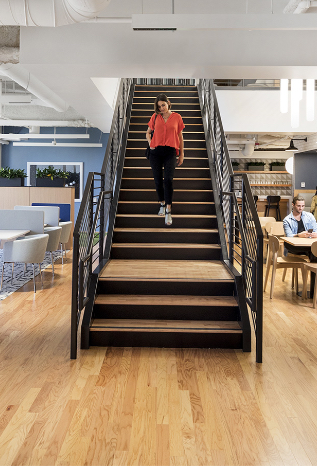Searches for ‘office plants’ are up +52% compared to the same time last year. And while cacti, air plants, succulents and spider plants are increasingly popular ways to brighten up desks and create a greener office space, there are even more benefits to having plants in the office.
Why have plants in the office?
Several studies have shown a correlation between green space and general wellbeing. Biophilic office design, the act of bringing the outdoors into the work environment, has grown in popularity in recent years.
Around 70% of people say plants improve the atmosphere at home and in the office, while 31% say greenery and plants help them concentrate while working.
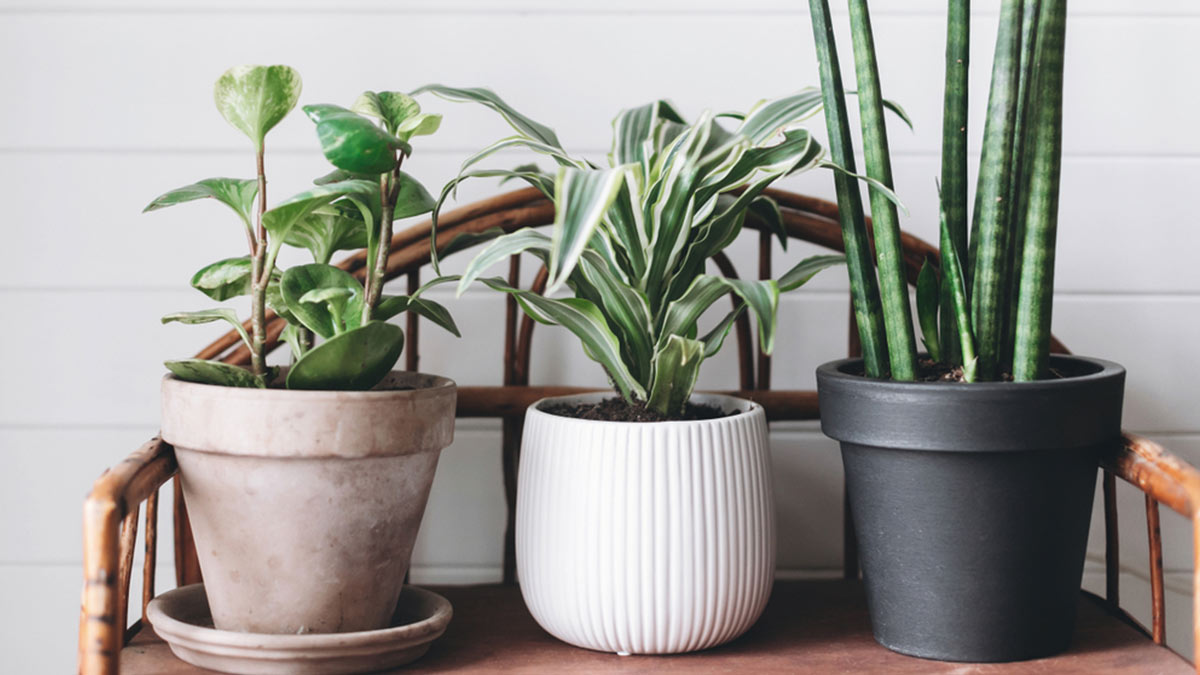
- Increased productivity
The first-ever study on the topic revealed that plants in the office could increase productivity by 15%. When considering air quality, workplace satisfaction and productivity in ‘lean’ offices versus ‘green’ ones, quality of life and productivity increased across the board. - Reduced stress
While many people take to gardening as a stress buster, a green workspace can produce a similar impact. A study concluded that plants in your home or office could make you feel more comfortable and relaxed. The colour green is strongly associated with nature, which reduces stress and promotes feelings of calm and tranquillity. Introducing more of the colour green by adding plenty of houseplants is a fun and alternative way to reduce stress. - Better health and wellbeing
We already know plants in the office improve wellbeing, which positively impacts both physical and mental health. One study showed it could improve air humidity, create the perception of a more comfortable temperature, and improve mood. The same study also revealed that a greener office space could reduce sick days per person, per year, by up to 1.6 days. - Reduced noise levels
The acoustic benefits of plants help reduce noise, which is vital for hybrid workers who work at home and in offices. Plants absorb sound, reduce echoes and help to minimise distractions. Placing a few large houseplants around the edges or corners of your office is the best way to use them to your advantage. - Boosted creativity
We all know the benefits of nature in the real world, but did you know that looking at plants can help your brain function differently and make you feel more relaxed, focused and creative? A study by Human Spaces found that employees whose offices included natural elements scored 15% higher for creativity than those without.
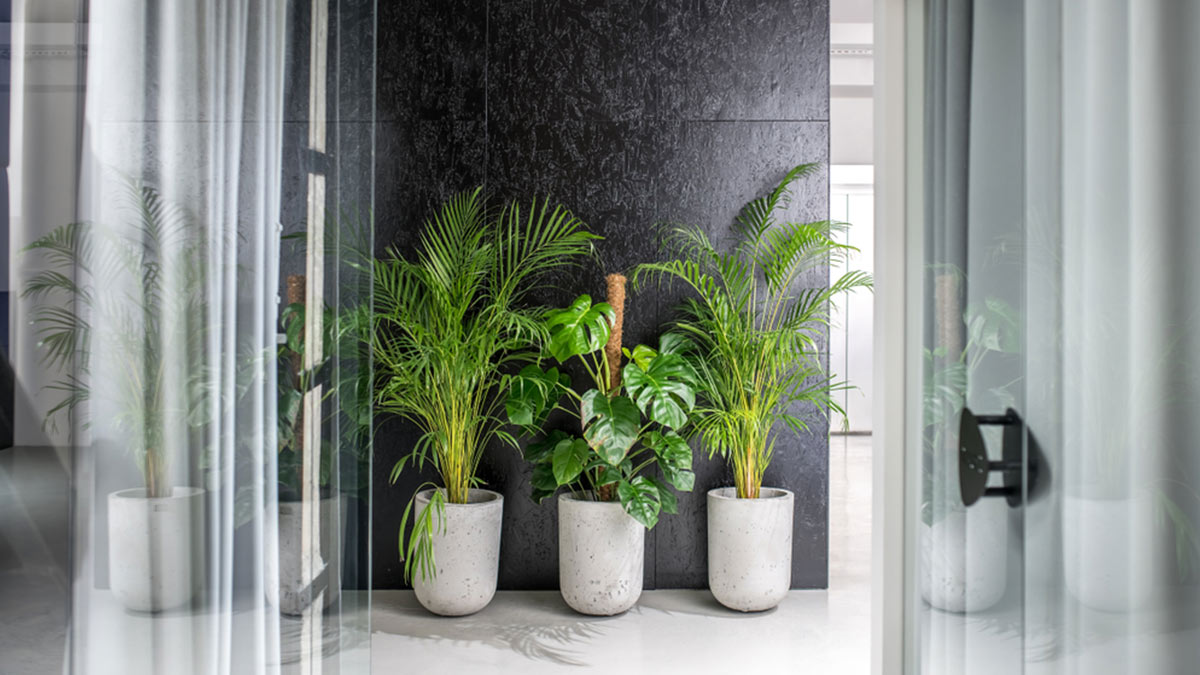
Which plants are good for the office?
Generally speaking, any plant will help you experience some of the benefits outlined above, but you’ll need to consider your workspace before you decide on the exact plants you’re going to include. Some thrive in different conditions to others, and some require more maintenance. Choosing the best indoor office plants for your space is essential, especially if you don’t want to replace them every few months!
Plants that do well in office lighting: Plants that don’t require much natural light and don’t need to be placed in direct sunlight generally do well in an office – Chinese Evergreen and Cast Iron plants are great examples that thrive in various conditions. Peace lilies are a good option, as they can also thrive in office fluorescent light.
Low maintenance plants: Succulents and cacti make excellent office desk plants. Succulents are pretty hardy plants and can survive in various conditions. Just be sure to provide some lighting and a well-draining potting mix.
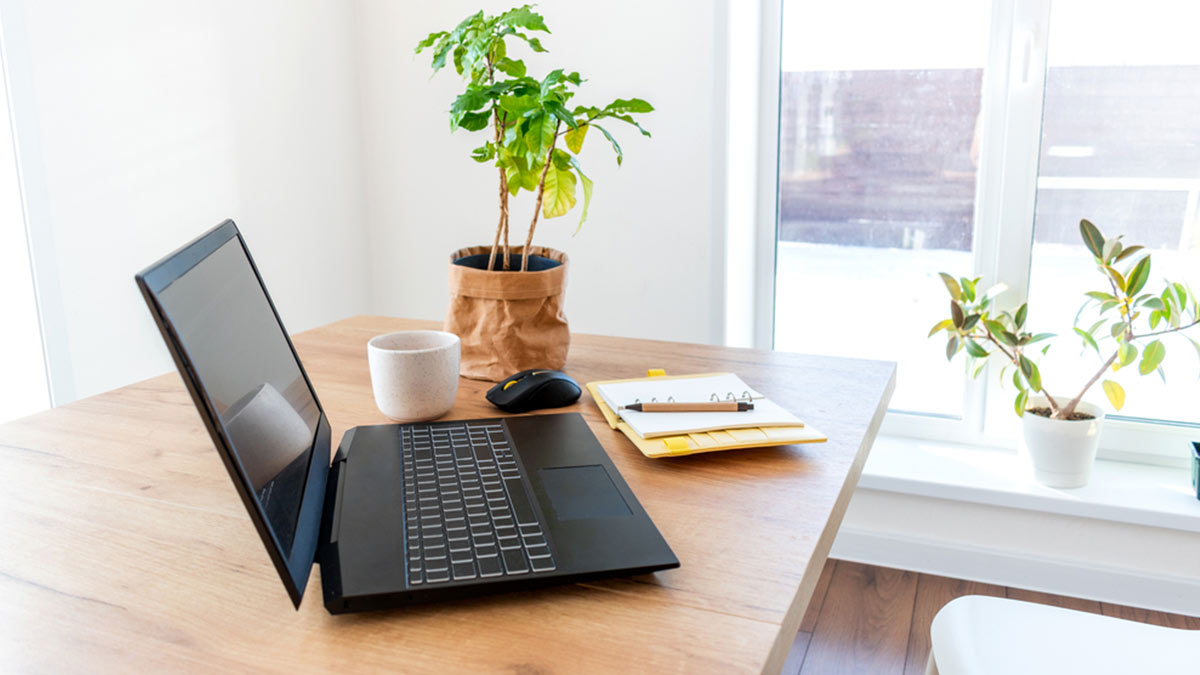
How to care for office plants
Having office plants creates a better working environment for everyone, but they must be looked after properly. Here are some essential things to remember:
Position your plants right – and try not to move them
The amount of natural light you’ll be able to find for your plants in the office will vary massively depending on where you place them. If you have plants that need lots of light, ensure they’re near a source of sunshine. Conversely, plants like peace lilies don’t need much light, so you can get away with positioning them in darker places.
Once you’ve positioned a plant, keep it there for as long as possible. Plants often structurally adapt according to their position, shifting their growth towards the predominant light source. Keeping plants in the same place allows them to grow most beneficially, whereas changing their position will significantly damage a plant’s growth.
Create a watering rota
Keeping on top of watering plants can be a chore, and it’s easy to forget who watered which plants and when. The easiest way to keep on top of watering is to create a rota of team volunteers to look after your office plants.
When watering, ensure that the roots are thoroughly watered and check on the plant a short while after watering to eliminate any excess water that could lead to root decay.
Keep plants away from drafts
Plants tend to like slightly humid environments and are harmed by exposure to constant cold and drafts. Keeping plants away from vents, conditioners and drafty windows helps to keep them safe from drying out.
Some office environments are naturally more humid than others, the best example being a kitchen. Keeping plants in humid environments keeps them healthy and growing with plenty of moisture.
Get the right size pots
If you’re successful at keeping your plants alive, you’ll need to make sure they are sat in pots which can accommodate their growth. A common mistake is to leave plants in too little soil, meaning the soil nutrients in the pot aren’t sufficient for the number of roots present.
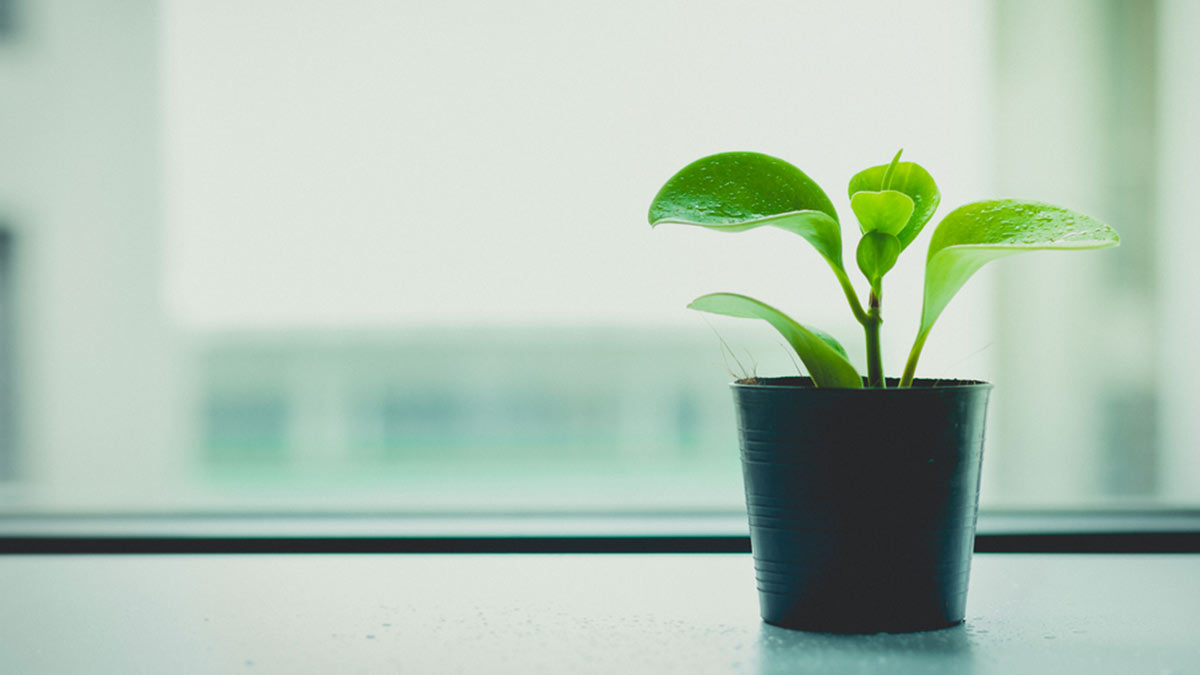
Find an office for your team today
We know how important an inspiring and personalised workspace is to keep your team productive. Many of our office spaces can be tailored to suit your design requirements, enabling you to move around the furnishings to ensure you can fit plenty of plants around the place. To find out more, view our listings and get in contact to speak to a member of our expert team.

